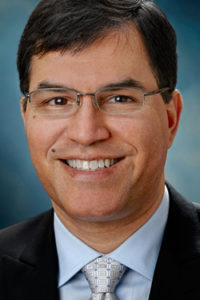Many of future enterprises will start, unfold or develop in what in the USA, is called the fourth sector. The fourth sector comprises for-benefit organizations that combine the bottom lines of the private, public and NGO sectors in society. There are already thousands and thousands of them in the USA and all over the world. In Sweden there are fourth sector enterprises, though we are not labelling them as that.
Heerad Sabeti, living in USA, is a serial entrepreneur and systems thinker who for nearly 25 years, has been working toward the development of the fourth sector. He has served as an advisor to governments, corporations and NGOs on multi-sector partnerships, sustainable economic development and entrepreneurial solutions to social and environmental challenges and in many other missions.
“The enterprises in the fourth sector are like the blades of grass that grow between the cracks in the pavement,” says Heerad Sabeti. “That’s because these enterprises don’t have the supportive ecosystems that traditional for-profits and NGOs have. Most of the examples we see have had to make compromises to fit into economic systems that don’t adequately recognize them. I think we would see a significantly larger and more impactful landscape of for-benefit organizations if those barriers didn’t exist.”
 Heerad means that our economic system is not wired for people leveraging business as a tool for social and environmental benefit, it is more oriented towards business being a tool for making money. But the system is slowly changing. To meet the challenges of economic, environmental and social sustainability, there are movements converging toward the fourth sector.
Heerad means that our economic system is not wired for people leveraging business as a tool for social and environmental benefit, it is more oriented towards business being a tool for making money. But the system is slowly changing. To meet the challenges of economic, environmental and social sustainability, there are movements converging toward the fourth sector.
“I got involved in for-benefit business when as an entrepreneur I tried to create a different model of organization that combined the logics of business and purpose. It’s so encouraging to now see so many people who want to codify this as a fourth sector and create the supportive infrastructure that can help these for-benefits scale and deliver on their promise. Today there are plenty of leading companies that have real commitment to move beyond profits to purposeful societal impact.”
Heerad´s original thought, in his youth, was to start a billion dollar business as a way to scale up the capacity to make a real difference in the world. He now thinks this was a very naïve idea at the time.
“But I was just a kid in college and didn’t know any better. So when I went down the path, it turned out that leveraging business to create change was not a bad idea, but it would take a whole sector of such businesses to make a real difference because of the scale and complexity of the problems we’re facing”, says Heerad.
The fourth sector is a large tapestry of activity. It comprises, for example, circular economy, conscious capitalism, inclusive business, blue economy and venture philanthropy. The people involved in the different parts of the sector are having a large awareness of it.
“I think that there is a significant movement within the private sector towards sustainability and purpose”, says Heerad. “And there is broadening awareness and activism among consumers, investors and workers. Basically, there is a movement of traditional for-profit businesses towards the for-benefit model.”
As Heerad Sabeti says, the ecosystems that support for-benefit enterprises are still weak. From our perspective, there’s a strong emphasis on strengthening that ecosystem because that’s what’s holding back fourth sector companies from being as fully realized in terms of their social, environmental, and economic impacts as they would like, and it’s also constraining more traditional companies from moving towards sustainability further and faster.
The fourth sector is nothing but a container of organizations, everyone with their interests and focuses. An altered legislation that would support fourth sector enterprises has to anticipate certain conditions of the sector.
“Most advocates in this space are focused on a narrow segment of organizations within the fourth sector, which limits their analysis of the barriers that need to be addressed, and hence the nature of the policy solutions required. Ultimately, for the fourth sector to achieve it’s potential, we need to get beyond this piecemeal approach to policy design and take a broad and comprehensive approach, like we have done for the second and third sectors”, says Heerad.
The big challenge is that we are not well informed about what’s happening in the fourth sector because there is not sufficient data and understanding.
“That’s why we are conducting a global census of the fourth sector through a multi-stakeholder collaborative project called the Fourth Sector Mapping Initiative.”
“It will illuminate the sector for policymakers, investors, and other stakeholders with robust data on for-benefit enterprises and their supportive ecosystems, including the industries and geographies they are in, the social, environmental and economic impacts they have in the world, the barriers they’re facing, and much more. Once people understand the full scope and scale of the fourth sector, it will be game changing.”
Heerad Sabeti stresses that developing a strong, supportive ecosystem and institutionalizing models of private enterprise for the public good is really critical.
“In the non-profit sector there are restrictions on commercial activities, and in the for-profit sector it is difficult to pursue a social aim as your primary purpose, says Heerad. The structures are optimized for pursuit of social aims or profit maximization, not the integration of both logics. And their ecosystems–the capital markets, the policy environments, the measurement standards–are not compatible with the needs of for-benefits. And yet, if we are to actually solve many of our critical challenges, we need to be able to dramatically scale for-benefit solutions.”
For further reading:
http://www.impacteconomysummit.com
http://www.mapping-conf-2015.fourthsector.net
http://www.mapping.fourthsector.nethttp://bteam.org/team/heerad-sabeti/
Examples:

